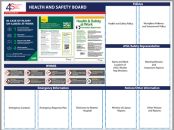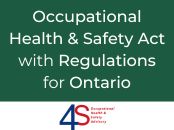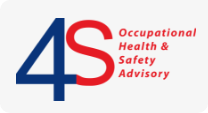JHSC Part 2 Virtual
Joint Health and Safety Committee training (JHSC certification training) is a mandatory requirement in Ontario for employers with 20 or more workers. The JHSC must include at least one (1) worker and one (1) manager. Building a safety culture starts with getting JHSC certified. JHSC Part 2 Virtual has a duration of 2 days and is conducted online.


Language : English
Unit Price$349.00 CAD
This course includes
- Access to JHSC Part 2 Course Content and Knowledge from Industry Veterans
- Digital Copy of Participant Manual
- QR Coded certificate upon successful completion of the course
Course Description
Our JHSC Part 2 virtual course consists of two, live instructor-led, learning sessions delivered virtually by our experienced trainers at schedule times for up to 25 students per session. This two-day course allows the learner to complete the modules in virtual setting from there remote location, making it accessible to anyone with internet. Part Two, Workplace-Specific Hazard Training focuses on significant hazards in the workplace. Employers are required to select a minimum of six hazards relevant to the workplace. It covers RACE methodology (recognize, assess, control, and evaluate) on how to assess those hazards and ways to control and/or eliminate them.
What will you learn?
- Recognize, assess, and control workplace hazards using established health and safety principles
- Evaluate the effectiveness of implemented hazard controls
- Apply hazard management concepts to a minimum of six (6) hazards relevant to their own workplace
- Develop practical action plans to address identified hazards
- Formulate clear, actionable recommendations for their employer to improve workplace safety
- Demonstrate hazard control planning skills through hands-on activities and real-world examples

Benefits Of JHSC Part 2 Virtual Certification
Self Paced Training
Anytime - Anywhere - Anyplace
Online Learning
Get access to a State-Of-The-Art LMS System which provides you with all the tools you need to get certified.
CPO Approved
Get certified for training approved by Ontarios Chief Prevention Officer
Course Content
Learners will have their understanding of the continuous improvement system of RACE (recognizing, assessing, controlling, and evaluating hazards) in order to support the activities of the Joint Health and Safety Committee (JHSC). In addition, learners will review the role and functions of Certified Members of the JHSC in order to understand their new role upon completion of the training.
Students will be provided an in-depth look at the three most common incident types that lead to lost time injuries according to the Workplace Safety Insurance Board (WSIB). The three hazards are: Slips, trips and falls, Chemical and Biological, as well as Musculoskeletal. After being provided with in depth information regarding the hazards and how RACE applies the learners will as a group utilize a standard Hazard Management Tool with the assistance of the instructor to gain experience investigating and documenting Hazards and incidents.
In 2010 language was added to the Occupational Health and Safety Act to place specific responsibilities for the workplace parties. The instructor will review the language in the OHSA and the duties of the workplace parties. After being provided with in depth information regarding the hazard and how RACE applies the learners will as a group utilize a standard Hazard Management Tool with the assistance of the instructor to gain experience investigating and documenting Hazards and incidents.
Students will be guided through an investigation of the nature of Electrical and Fire hazards as while they only occur rarely, they have a high severity and are often fatal. After being provided with in depth information regarding the hazards and how RACE applies the learners will as a group utilize a standard Hazard Management Tool with the assistance of the instructor to gain experience investigating and documenting Hazards and incidents.
The most effective tool of the JHSC is the Recommendation. Students will be shown how to effectively craft a recommendation to support the concept of due diligence. Finally, learners will be shown how to maintain an Action Plan to track the work of the committee in order to build an effective and streamlined process.
Resources
Who needs JHSC trainingWhat Our Customers Have To Say
Frequently Asked Questions about JHSC Part 2 Virtual
A joint health and safety committee (JHSC) is a forum for bringing health and safety issues forward so that they can be resolved. The committee consists of labour and management representatives who meet on a regular basis to deal with health and safety issues. The advantage of a joint committee is that the in-depth practical knowledge of specific tasks (labour) is brought together with the larger overview of company policies, and procedures (management). Another significant benefit is the enhancement of cooperation among all parts of the work force toward solving health and safety problems. In smaller companies with fewer than a specified number of employees, a health and safety representative is generally required.
The IRS is a system, within an organization, where everyone has direct responsibility for health and safety as an essential part of his or her job. It does not matter who or where the person is in the organization, they achieve health and safety in a way that suits the kind of work they do.
The function of the committee is to support the IRS and ensure that it is functioning effectively. To do this, the JHSC has several duties which it is able to perform thanks to the rights afforded to it by the Occupational Health and Safety Act (OHSA). The following duties and rights ensure that the JHSC functions successfully. • Identifying workplace hazards. A worker member of the JHSC inspects the workplace monthly to identify workplace hazards that could endanger the health or safety of workers. • Making recommendations to the employer. The JHSC recommends ways to improve workplace health and safety such as additional protective devices and Personal Protective Equipment PPE) or safety training programs. • Investigate work refusals. A worker member of the JHSC must be present at work refusal investigations to ensure that the health and safety of the refusing worker is the top priority. • Investigate critical injuries or fatalities. A worker member of the JHSC must be present at investigations of fatalities or critical injuries. • Consulting. The JHSC has a right to be consulted prior to any workplace testing that is related to occupational health and safety. A worker member also has the right to be present for the testing sessions. • Obtaining information. The JHSC can ask the employer for health and safety information, including information about potential or actual hazards, workplace safety practices, and workplace testing. The JHSC can also obtain information from the Workplace Safety Insurance Board (WSIB) if the workplace falls under the Workplace Safety Insurance Act.
The legal requirement to have a Joint Health and Safety Committee is: • 0-5 workers – not required • 6-19 workers – a Health and Safety Representative is required • 20 + - a JHSC is required with a minimum of two (2) members • 50+- a JHSC is required with a minimum of four (4) members In special cases where there are some significant health and safety hazards, a MILTSD inspector can order a JHSC to be formed before with fewer than twenty workers.
No, not all members of a JHSC have to be certified. A minimum of two (2) members of each JHSC must be certified, one each from members representing workers, and management.
In order to be certified a member of a JHSC must complete both parts 1 & 2 of a JHSC certification course, and complete JHSC refresher training every three (3) years.
A minimum of two (2) members of each JHSC must be certified, one each from members representing workers, and management. Best practice would have more than the minimum number of JHSC members certified in order to cope with vacations, and attrition.
In order to be certified a member of a JHSC must complete both parts 1 & 2 of a JHSC certification course, and complete JHSC refresher training every three (3) years. For information on courses contact training@4sconsult.com!
Yes!
The Occupational Health and Safety Act does not supply a minimum number, but consistent application by the MLTSD is that the JHSC meet at minimum quarterly (4 times a year). A JHSC should establish in its Terms of Reference (a document that sets out “how” the JHSC will do its work) the frequency of the meetings based on the needs of the business and the nature of its work.
To attend JHSC Part 2 Certification a participant must first complete all elements of Part 1, pay all appropriate fees, and follow the guidelines of the MLTSD. Additionally, Part 2 must be completed within six (6) months of completing Part 1.
The best way to get discounts is to “bundle” the courses, or register for both at the same time. Alternatively, registering multiple candidates at the same time can also afford some discounts. For information on courses contact training@4sconsult.com
Yes, it is a requirement of the Occupational Health and safety Act that minutes must be posted (Section 9(22)). As a general guideline, minutes should be posted for three (3) months and then a copy stored in accessible file for a minimum of seven (7) years. To ensure confidentiality and privacy, minutes should not contain any information which cannot be publicly released.
Our Products

Templates for 17 - "COR™ 2020" policies and procedures
Need a kick-start to your COR™ journey? Get templates of the 17 policies and procedures that meet the IHSA- COR™ 2020 requirements. Customize these templates to align with your organization’s specific requirements.

"COR™ 2020" audit guide Checklist
Preparing for a COR™ audit? Use the COR™ 2020 Audit Guide to assist with internal audit submission and/or external audit. The checklist provides examples of supporting evidence for each subsection of the 14 -COR™ 2020 elements.

Templates for 20 - "ISO-45001" compliant procedures
Need a kick-start to your ISO 45001 journey? Get templates of 20 policies and procedures that meet the ISO 45001 standard. Customize these templates to align to your organization’s specific requirements.

Checklists for 20 - "ISO-45001" topics
Preparing for an ISO 45001 audit? Use the Checklists to prepare each topic, collate evidence and assist with the internal and certification audits

Templates of Inspection Reporting forms
Need help with developing inspection forms? Workplace Inspection /reporting forms that meet legislative requirements. Equipment-specific inspection or maintenance checklists are not part of this option but can be developed as well.

Checklist for Legislative Compliance
Getting into Legislative Compliance? Use this 14 topic checklist to evaluate the legislative compliance of your workplace

Basic H&S manual
Need a basic H&S manual? The manual will cover and meet the legislative requirements for health and safety. The manual does not include job-specific practices and/or procedures.

H&S Policy, Workplace Violence and Harassment Policy
Basic policies- Health and Safety and Workplace Violence and Harassment policies. Print, sign, date and post them on your board.

H&S Board
Start with the basics- Get a H&S Board (36” * 48”) with mandatory posters and WHMIS symbols printed and sections premarked for company-specific information

Green Book - Ontario
The latest version of the Green Book with the Ontario Occupational Health and Safety Act with all pertaining regulations under the Act.


